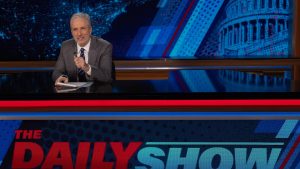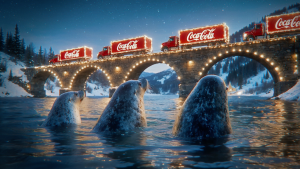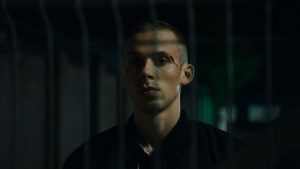
For a few weeks last November, no villain loomed larger over Madison Avenue and social media that polices it than Coca-Cola.
The company’s “Holidays Are Coming” spot, an homage to a classic 1995 ad, featured the original’s rhythmic anthem as trucks drove through various snowy landscapes. Only now the ad was filled with AI generated objects, animals and people — a fact that did not go over well with creatives and many others on the Internet who nonetheless helped the ad rack up billions of impressions. “Coca-Cola is red because it’s made from the blood of out-of-work artists,” Hollywood writer decried Alex Hirsch, one of many such negative comments noting both the spot’s labor ethics and its aesthetics.
On Monday, Coke is trying once more, releasing a new generative AI holiday ad with the globe-trucking concept. Again, the company has hired the Los Angeles-based AI studio Secret Level to produce the spot. This time, though, the ad features just animals — the only person seen is a Santa Claus at the very end, based on the company’s original drawings. (Coca-Cola inaugurated the modern depiction of Santa.)
The company believes enough has changed in a year, in both the tech and society, to evoke a different response.
“Last year people criticized the craftsmanship. But this year the craftsmanship is ten times better,” Pratik Thakar, global vice president and head of generative AI at Coca-Cola, tells The Hollywood Reporter. “There will be people who criticize – we cannot keep everyone 100% happy,” he adds. “But if the majority of consumers see it in a positive way it’s worth going forward.”
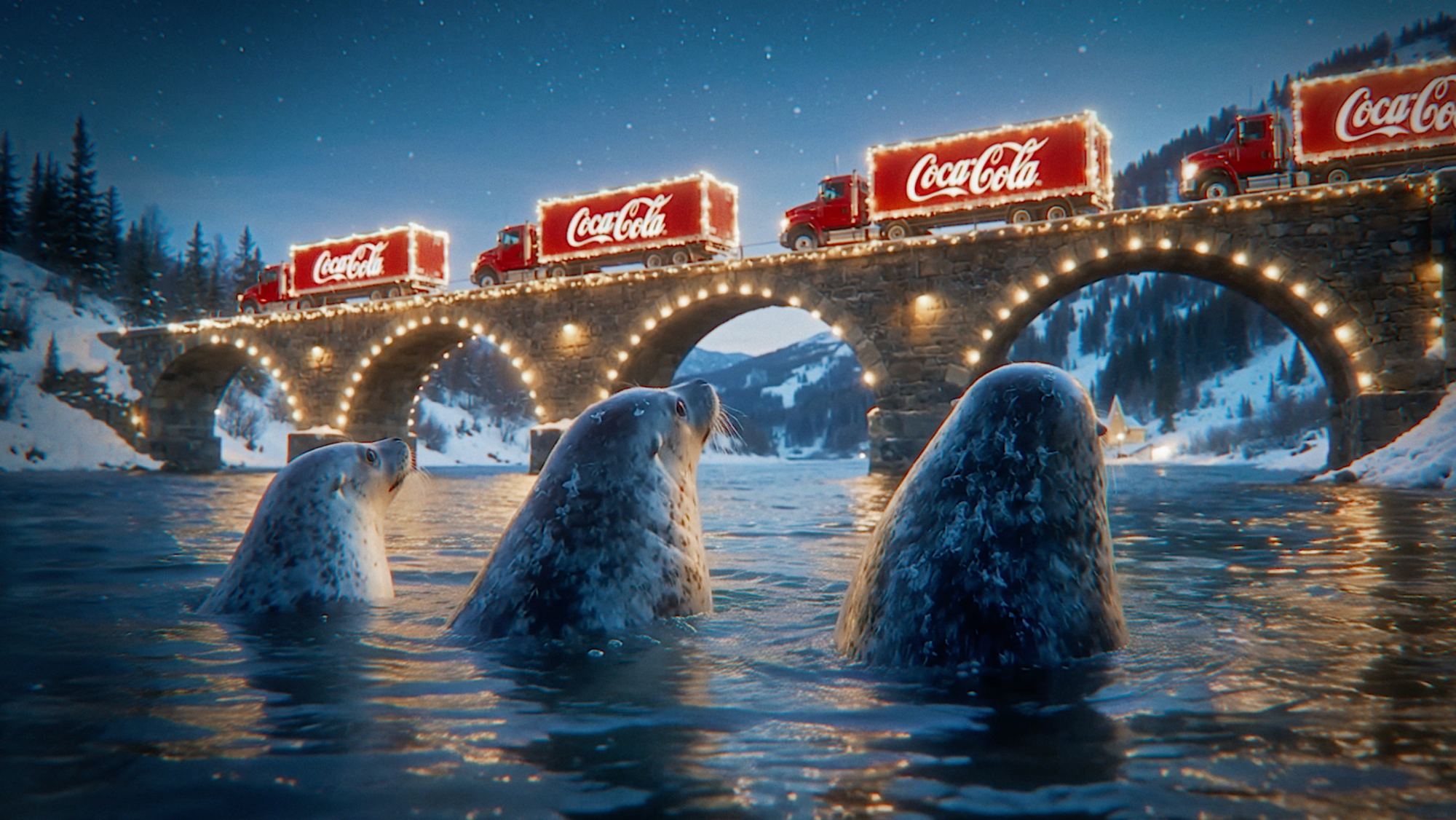
In a culture where Hollywood creators worry about an AI takeover while a video-watching citizenry braces itself for a wave of synthetic media from Sora 2 and others, an AI commercial at this level is no small thing. Coca-Cola is one of the world’s most dominant brands and the holidays one of Madison Avenue’s sacred human spaces. The unleashing of a spot by the former into the space of the latter could prove a litmus test for consumers’ appetite for AI video while also, perhaps, serving as a tool further normalizing its consumption.
The ad features the now-famous Coca-Cola trucks driving through different locales as animals from seals to pandas look on, suggesting a globetrotting trip. It ends as a truck door swings open and Santa appears. The image of the icon was generated exclusively by the archival paintings of Haddon Sundblom that the Coca-Cola company owns; the artist in the 1930s created the original Coke ads for The Saturday Evening Post that gave rise to our conception of the mythic St. Nicholas as a girthful bearded man in a red-and-white suit.
While the current generation of AI videos can often take on a disorienting stylized quality, Coca-Cola sought to lean into the bug by choosing to portray the stylized characters of anthropomorphic animals, which they say they couldn’t do before. “Last year it was difficult to get those expressions from animals so we had to use human faces. Now technology has evolved to where we can,” Thakar says.
The desired effect is that of a Madagascar or other modern CG animated movie that uses artists working from scratch instead of the approach here, of a model trained on thousands of earlier images. Jason Zada, Secret Level’s founder and chief creative officer, says he hopes viewers cannot distinguish this spot from a traditional Hollywood animated movie.
“The best compliment I get is when people say a video doesn’t look like AI,” he tells THR.
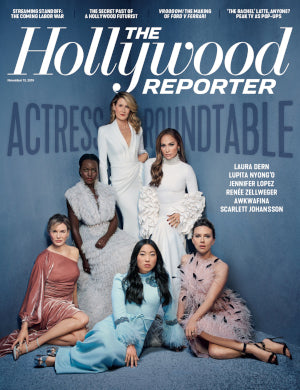
The company used several Large Language Models to generate the creative. Two other versions of the “holidays are coming” ad were also made this year, an AI one with another studio, Silverside, and a traditionally-shot one without the stylized animals, for some Latin markets.
AI is a perhaps unexpected focus for Coke, given the company’s history of a kind of schmaltzy humanism in its marketing. In addition to the Sundblom Santa paintings, which also had the rosy-cheeked character holding a Coke bottle in the likes of Ladies Home Journal and The New Yorker, the company is famous for its 1971 ad of a panoply of people from different backgrounds standing atop a mountain singing “I’d Like To Buy The World a Coke.”
Thakar says Coca-Cola is going through a “major marketing transformation, a companywide transformation” with AI at the center of the effort. The company was indeed one of the first to use the tech in a major ad when in 2023 it released “Masterpiece,” which brought the subjects of museum paintings to life catching and tossing Coke bottles, an ad that did not cause the backlash of last year’s holiday spot.
Zada believes social media gives a skewed impression of how some AI ads are going over.
“The haters on the Internet are the loudest, he says. “A lot of the people complaining last year were from the creative industry who were just afraid — afraid for their jobs, afraid for what it did. But I think the spot tested really well and average people really enjoyed it.”
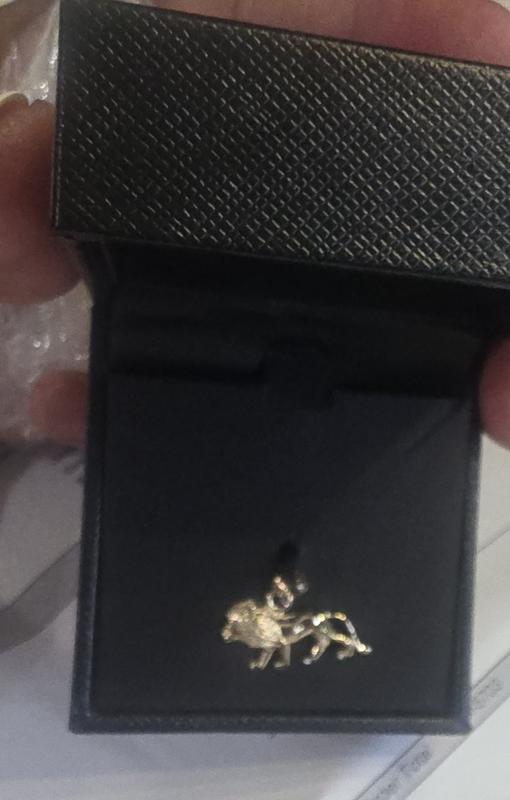
Zada said labor fears were misplaced; while the Coke ad this year required fewer people to make it — he estimated it at 20, compared to the at least 50 a one-minute ad of this complexity might typically entail — such efficiencies he thinks means that more could be done in a short amount of time. Brands will allocate the same budgets, Zada believes, leading perhaps to smaller teams on a given ad but more creative overall.
“You could do ten times as much at scale,” he says.
Whether Madison Avenue and Hollywood respond by doing more or just try to save money, however, remains to be seen. Coca-Cola’s AI push can be seen as a way to increase its appeal among younger, more zeitgeist-y consumers as the company faces competition from boutique sodas and other upstart beverages. But it also, in the long run, could save the company some cash, trimming at least some dollars off its reported $5 billion advertising budget. Madison Avenue executives generally are bracing for a potential significant downsizing in budgets as AI is deployed in areas from creative to research.
Thakar, who denies the company will spend less money on advertising overall in the AI age, says he’s taking a long view of what the tech can do, backlash and all.
“Last year we decided to go all in, and it worked out well for us,” he said, noting that “consumer engagement was very high. Yes, some parts of the industry were not pleased we were using a 100% Generative AI film, but that’s part and parcel of doing something pioneering. We understand that concern. But we need to keep moving forward and pushing the envelope.” He said the company was open to using it for activations in other times of the year, even high-impact ones like March Madness.

“The genie is out of the bottle,” he says, “and you’re not going to put it back in.”
#holiday #ads #craftsmanship

